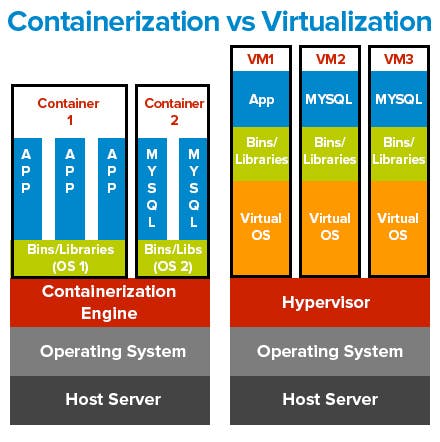Virtualization has been around for a while now, but it’s future might be limited. Containerization, per some industry experts, is the next wave. Since containerization isn’t nearly as popular of a term just yet, but it could be exploding here in the near future, you’re probably wondering, “what is containerization?”
We turned to an industry expert experienced with containerization for a lot of help in this article. That expert is Nick Espinosa, the CIO at BSSi2, an IT Consultancy based out of South Barrington IL. They can help you with backup and recovery, virtualization, email and spam protection and more. Check out their website at BSSi2.com.
Keep reading to find out what Nick had to say regarding containerization and why virtualization might be a thing of the past…
What is Containerization?
Containerization is a method of hosting applications, databases and processes that is much more efficient than the traditional virtualization method. It utilizes resources in a clustered or large environment much better than virtualization because it has less layers to load into memory and run.
Containers share a single operating system to publish all applications, databases, processes etc… but they’re also isolated so one container cannot affect the other if there is a health issue.
What’s the Difference Between Virtualization and Containerization?

- Physical server equipment
- A host operating system to run the physical equipment
- A hyper visor installed into the host OS
- Multiple guest operating systems (virtual machines) to run the applications, databases and processes
- The Binaries and Libraries needed for the applications, etc…
- The applications, etc…, each usually installed into its own virtual server
- Physical server equipment
- A host operating system to run the physical equipment
- The container system engine
- The Binaries and Libraries needed for the applications, etc…
- The applications, etc…, each usually installed into its own virtual server
Did you notice the difference? As stated earlier, containers share a single operating system.
By not loading up multiple guest operating systems to accomplish all the various tasks you need, you are saving an enormous of processing power, memory use and even networking bandwidth. Containers are usually very quick and easy to deploy and can be configured to come online and go offline as needed. So, if you have a database that is suddenly being taxed very heavily you can have the system add more containers to pull more resources to ensure QoS for the performance and then when the taxation resides, the excess containers can be killed to free up the resources again.
Why Containerization is Better than Virtualization
What makes this better is that, as I mentioned above, you can rapidly deploy resources to meet your needs and that you actually need less server power to effectively run the applications.
Consider for a moment that this is like constructing a building. If virtualization is a 10 story building then containerization can be a 20 or 30 story building using the exact same amounts of building materials. You can’t build a skyscraper but you can do much more with what you have. Anything that optimizes performance and delivery pushes technology further.
Containerization Case Study
For example, here at BSSi2, we were recently quoting a new client for a desperately needed server setup for their business.
I estimated that they would need about 160 cores to effectively run their database and other applications they had on their network. I was able to create effective estimates as to how much utilization they would have in a virtual versus containerized environment and we could see that they would need 40% less cores to accomplish the task under containerization.
So the question becomes: “Do we reduce the processing power by 40% and get 3 years of service before we start looking at adding more power” or “Do we deploy all 160 cores now and know that we can get 5-6 years before looking into upgrades?”
When you have to buy large amounts of infrastructure, anything that will reduce your costs by 40% or keep the cost the same but double the life expectancy is a major win. The question of containerization versus virtualization was no longer a question.

